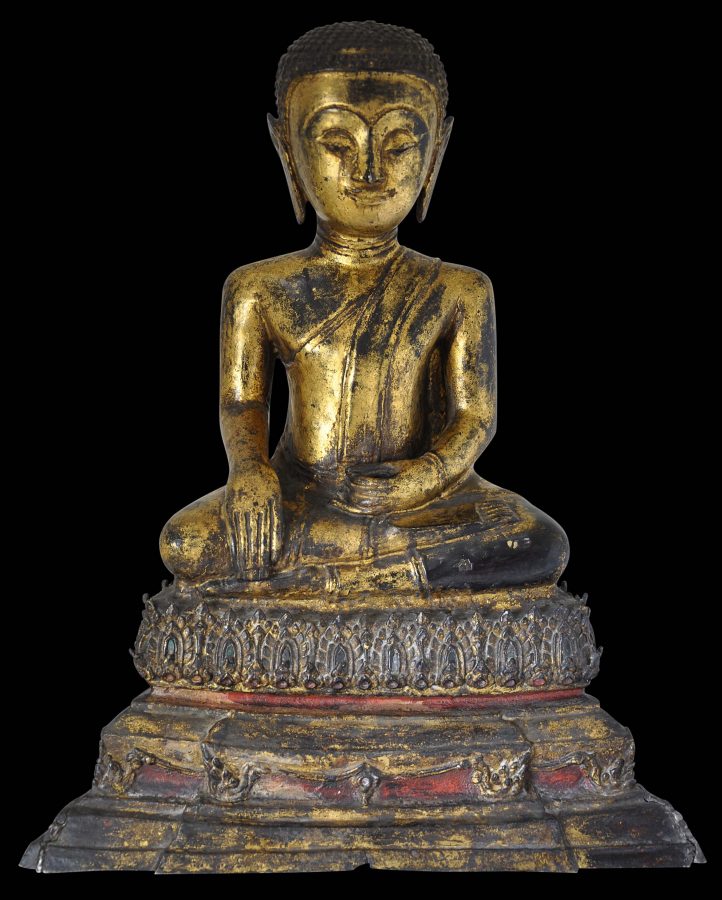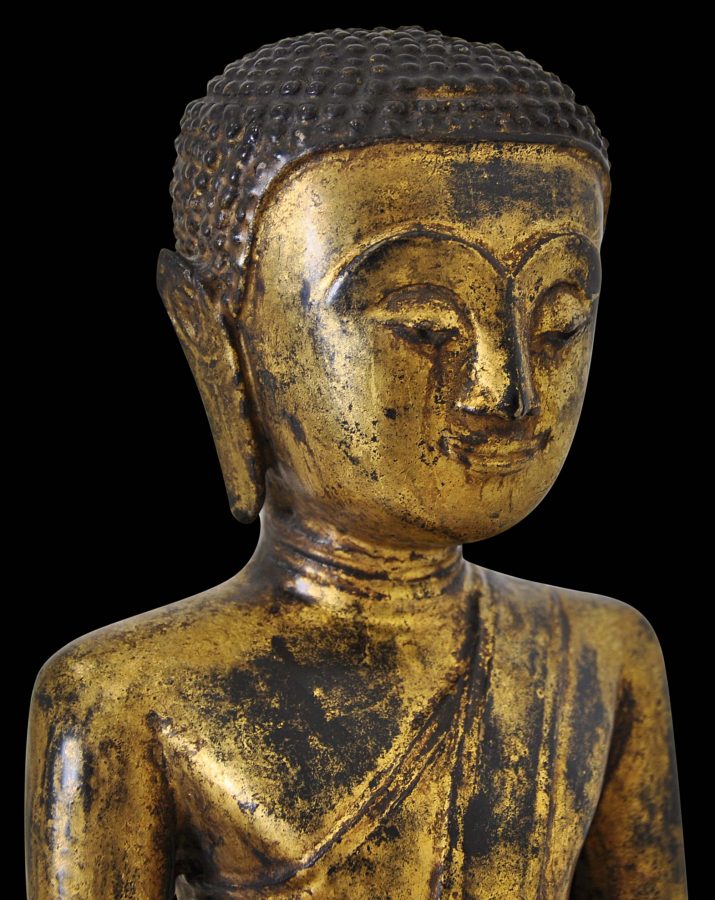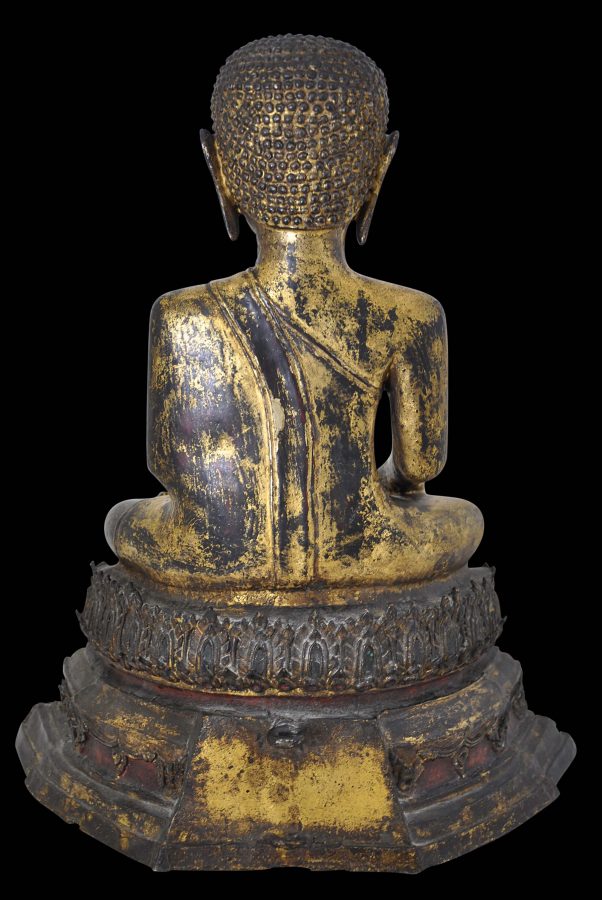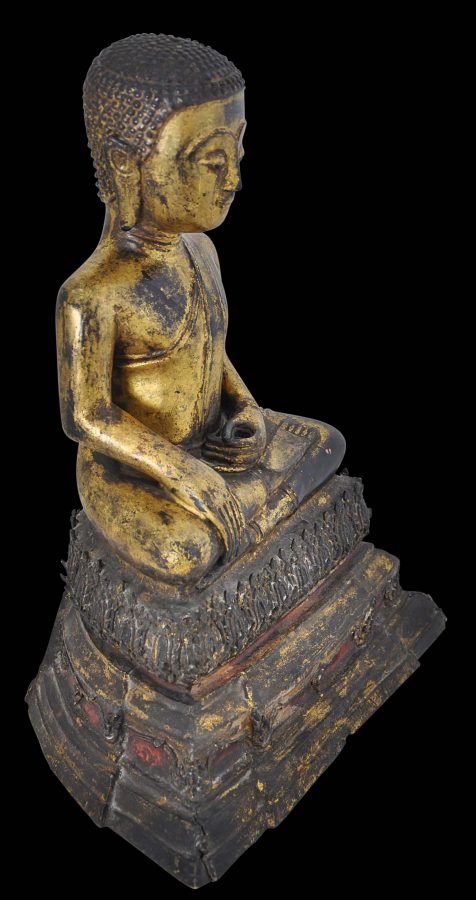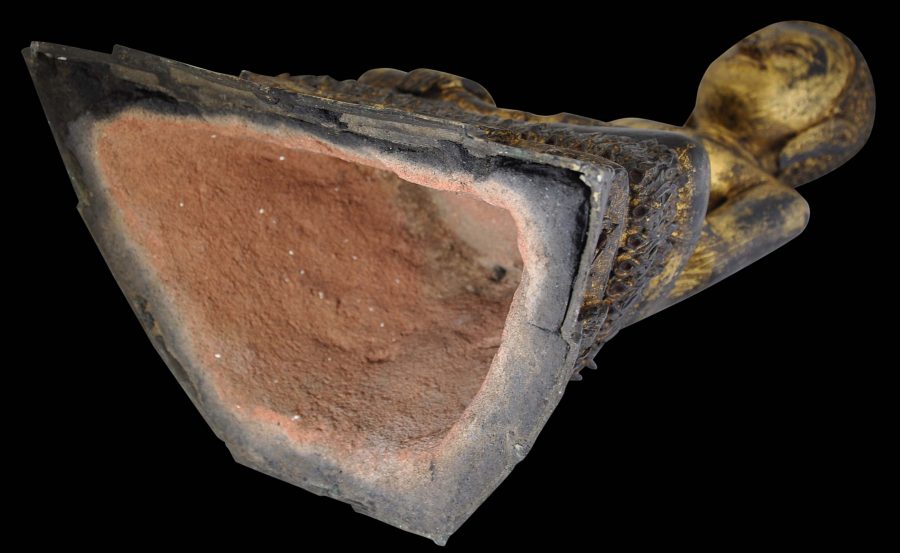Enquiry about object: 3339
Thai Gilded Bronze Buddha or Buddhist Attendant
Thailand late 19th century
height: 36cm, width: 30cm
Provenance
UK art market
This fine, cast bronze image dates to the late 19th century. It is in a Thai Rattanokarsin style, which is most particularly evident in the decoration around the tiered throne on which the image sits.
It has been lacquered in black and red and then gilded (covered with gold leaf) which has worn with devotional wear. The image, in the first instance, appears to be that of the Buddha – but there are some important iconographic departures which suggest that it might have been intended to be a Buddhistic attendant rather than the Buddha himself.
The image does not have a cranial protuberance (the usnisha) which is associated with the Buddha. This might suggest that the image is not the Buddha. However, towards the end of the 19th century in Thailand, with more European influence, there was a stylistic shift to make Buddha images more human-like and less stylised and so unishas sometimes were done away with.
The left hand rests on the lap and is curled in a way that suggests that it might have held a fan or similar. Again, this might be more in keeping with an attendant.
The figure’s right hand is in the calling-the-earth-to-witness gesture (bhumisparsha mudra). This gesture is more in keeping with the image being that of the Buddha.
A gilded bronze of almost identical posture and form is in the Doris Duke Collection (illustrated in Tingley, 2003, p, 33).
The back is cast with a ring lug which would have allowed the image to be secured to a wall or platform.
The image is in fine condition. It is hollow-cast, although much of the clay firing core is still present. Overall, the image is serene and highly decorative. It sits flatly and in a stable manner.
References
Tingley, N.,Doris Duke: The Southeast Asian Art Collection, The Foundation for Southeast Asian Art and Culture, 2003.


